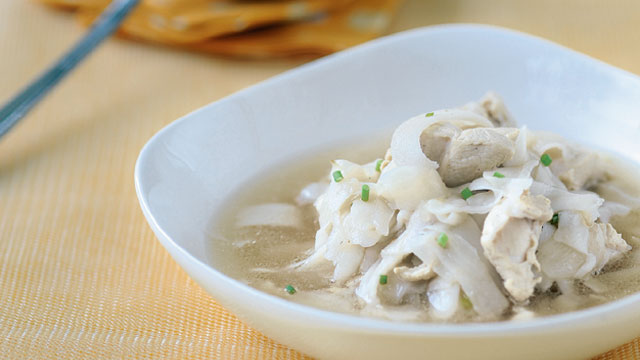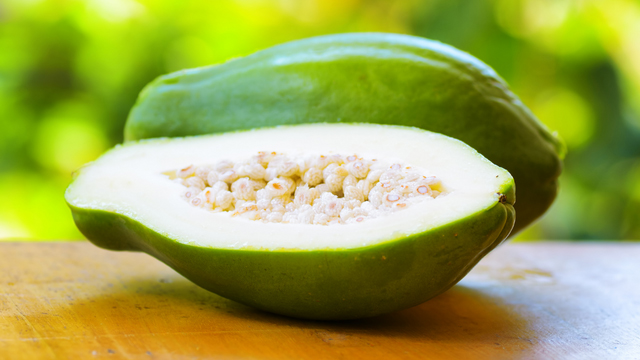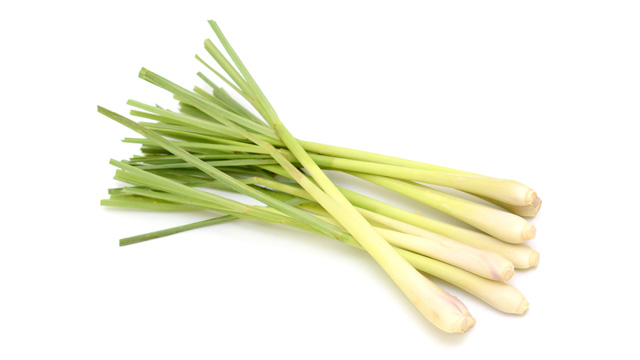Many Filipino ulam recipes are derivatives or variations of a basic recipe. Take the adobo as a classic example. From the most basic adobo recipe which is a marinated and simmered dish in vinegar aka the adobong puti or adobo sa asin, and you can add ingredients or swap ingredients to make it into the classic adobo with soy sauce. Swap the chicken or pork and use tokwa for an adobong tokwa. Change the kind of vinegar to make a balsamic adobo version, and so on.
The tinola and the binakol are very similar. These two ulam recipes are basically chicken soups with big differences in flavor that make each appetizingly delicious. What makes each dish different?

1 Tinola is a ginger soup. Binakol is a coconut soup.
Tinola is a popular ulam recipe. It's a simple dish! This chicken soup is simmered in ginger and this infuses the chicken broth with its flavor! The binakol is similar but instead of simmering the chicken and ginger combo in water to infuse it with its flavors, it's not water that is used as the base of its broth.
However, it's not gata or coconut milk or even the cream that is used. Instead, it uses buko juice or coconut water to create a clear soup that gives the soup a sweetness that is unique to the dish!
2 Tinola has green papaya. Binakol has coconut meat.

The debate can rage between purists and those who insist only green papaya should be in their tinola versus those who love the humble and more commonly available sayote. Some may even chuck in a more ripe papaya to the soup to give it a slight sweetness!
No matter which papaya you use, the green papaya is the classic veggie in the tinola despite the sayote being the common favorite, especially for those who can't find the more rare papaya for their daily tinola meals.
The binakol meanwhile normally doesn't have vegetables. Instead, the binakol relies on the coconut for its soup as well as its meat as the accompanying ingredient of the chicken. The sweetness from the buko juice and the crunch from the coconut meat are all contrasting tastes and textures to the tender chicken, giving this chicken soup a delightful flavor all around.
3 Tinola uses malunggay. Binakol uses dahon ng sili.

One of the ingredients in the binakol that isn't from the coconut is the dahon ng sili. Chili pepper leaves are edible but have a peppery taste to them but without the heat that the chili are known for.
While some use dahon ng sili for their tinola as well as for their binakol, probably the most popular leafy greens for the tinola is really the malunggay. Internationally known as moringa leaves, these tiny leaves have a mild flavor compared to the stronger dahon ng sili which do have a bite. Not only do dahon ng sili have a strong bitter taste, but its leaves are also quite stringy, making the malunggay easy to eat.

4 Tinola is seasoned with lots of ginger. Binakol is seasoned with lemongrass.
We know that tinola is basically a chicken ginger soup. However, did you know that some binakol also includes lemongrass or tanglad? The lemongrass is a delicious and aromatic herb that does mimic the taste and aroma of lemons! However, it also has a grassy undertone to its taste that makes it a little different from the flavor of the yellow citrus fruit.
This herb gives the binakol a refreshing taste and aroma as well that complement the savory chicken and the fresh coconut water flavors.
Do you agree with our assessment? Are there other differences that you know of that we missed? Let us know what you think of these two Filipino ulam dishes.
[ArticleReco:{"articles":["25503","25311","25185","25150"]}]
***

